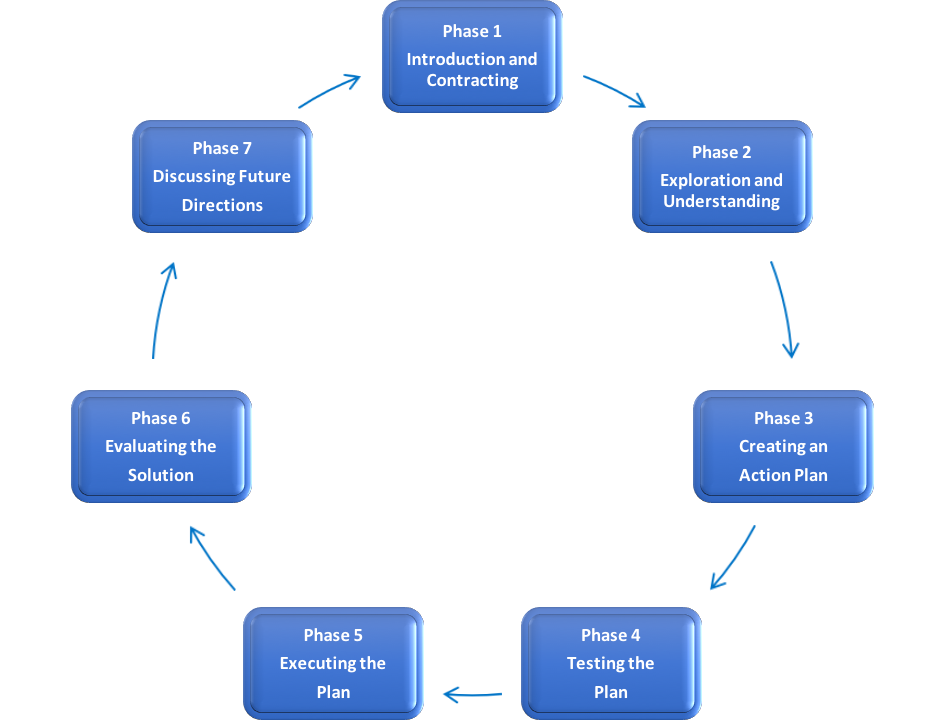THE NDC DIVERSITY COLLABORATIVE CONSULTING MODEL
The Collaborative Consulting model, employed by NDC, is informed by the fact that even though consultants may know well the theory, techniques, and strategies for change, it is the clients that know the culture of their organization and what aspects of an intervention may be beneficial. All NDC consultants work closely with our clients to target the areas and issues that are of concern in every organization with specific strategies that would be successful in that environment. The graph below provides a closed loop system, which guarantees better compliance to the solutions generated by the consultant in collaboration with the client.
Welcome to the exploration of The National Diversity Collaborative’s Consulting Model.

The NDC Diversity Collaborative Consulting Model
Phase 1 – Introduction and Contracting
During this phase, the client presents issues and discusses the extent of the problem and possible solutions with consultant. After they agree the client and consultant sign the contract.
Phase 2 – Exploration and Understanding
This is the diagnostic phase where the client and the consultant must work together collaboratively by reviewing documents, administering questionnaires and conducting interviews to clearly identify the client’s issues from multiple perspectives. Consultants use their change management knowledge and experience to guide the process and share results in an aggregate format with the organization.
Phase 3 – Creating an Action Plan
Based on their expertise and their understanding of the company, consultants discuss possible solutions with client who provides insight on the culture and history of the organization. This planning phase requires the client and the consultant working together to ensure the action plan is relevant and realistic.
Phase 4 – Testing the Plan
To ensure the appropriateness and effectiveness of the training, the consultant implements the solution with a small group and based on their feedback the final training and other interventions are created and finetuned.
Phase 5 – Executing the Plan
In this phase, the consultant rolls out the plan to the whole organization while client provides feedback when needed. There must be constant evaluation of the quality of the results obtained from the intervention.
Phase 6 – Evaluating the Solution
In this phase, the consultant and client discuss lessons learned and effectiveness of the journey immediately and in six months to ensure that the client is able to adopt and integrate the recommendations long term.
Phase 7 -Discussing Future Directions
In this phase the consultant and the client close the loop and discuss the expansion of the intervention as well as other areas that may need additional training or development efforts.
